Active Recovery for Powerlifters
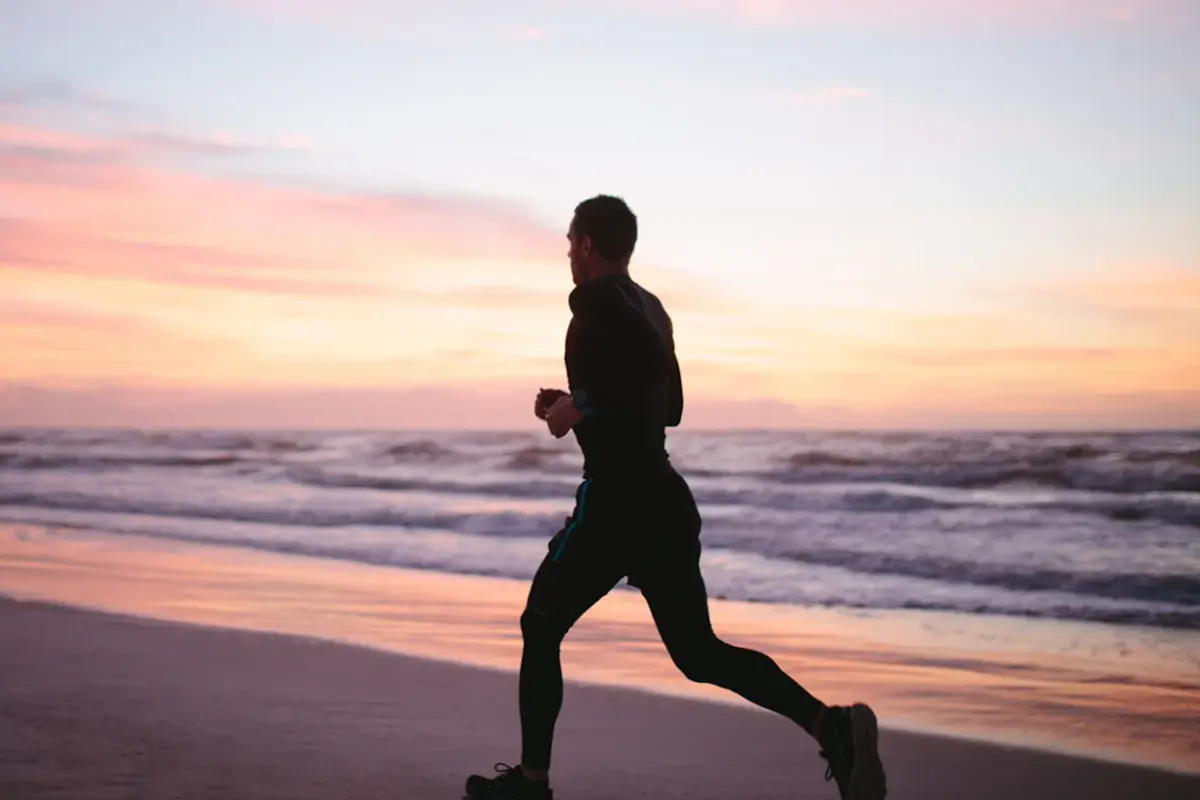
What's In This Article
- Key Highlights
- Introduction
- The Balanced Approach to Training on Rest Days
- Active Recovery: What It Is and How It Works
- The Remarkable Benefits of Incorporating Active Recovery
- Effective Active Recovery Workout Examples
- Active Recovery Frequency: Finding Your Optimal Schedule
- Active vs. Passive Recovery: Optimising Your Recovery Strategy
- Mental Health Benefits of Active Recovery for Powerlifting
- Concluding Thoughts on Active Recovery for Powerlifters
- Frequently Asked Questions
- References
- Resources
Key Highlights
- Active recovery involves low-intensity exercises like walking, yoga, or swimming that promote blood flow and muscle repair without causing fatigue.
- Unlike passive methods, which involve complete rest, active recovery helps clear metabolic byproducts and reduces delayed onset muscle soreness (DOMS).
- Most powerlifters benefit from incorporating active recovery 2-3 times per week, depending on their training intensity and individual needs.
- It goes beyond physical benefits to provide psychological relief from intense training and reduce mental stress.
- Steady-state cardio, dynamic warm-ups, mobility work, and light resistance training are effective for powerlifters.
- Finding the right balance between active and passive methods is crucial for optimizing performance and preventing overtraining.
Introduction
Active recovery is vital in powerlifting training. It involves gentle activities to aid muscle repair and maintain blood flow. Unlike rest, active recovery includes light exercises to reduce muscle soreness after intense workouts.
This method helps powerlifters recover from tough sessions and prepares them for future challenges. Activities like light cardio or yoga can decrease muscle damage and stress levels.
This method is essential for powerlifters to prevent injuries and promote muscle growth. It is supported by exercise science, enabling athletes to train better and use rest days efficiently for overall conditioning.
A 2015 study by Howaston et al. found that strength training sessions resulted in greater neuromuscular and metabolic demands than power sessions. This impaired maximal force production up to 24 hours after the strength session, highlighting the need for optimal recovery strategies.
The Balanced Approach to Training on Rest Days
Rest days in strength sports, particularly in powerlifting, are often misunderstood. Dr. Karin VanBaak of the CU Sports Medicine & Performance Center emphasizes the importance of active recovery, stating that it "increases blood circulation, which helps remove waste products from soft tissue that have been broken down by intense exercise".
- Traditional rest days, characterised by minimal physical activity or complete inactivity, give way to a more nuanced approach known as active rest.
- Active rest, a key component of active recovery, involves engaging in light activities that promote muscle repair without imposing undue stress on the body. These activities, such as light jogging, stationary biking, or a leisurely yoga class, increase blood flow to the muscles, helping to clear metabolic byproducts and reduce delayed onset muscle soreness (DOMS).
The science behind this approach lies in its ability to provide just enough physical stimulus to the muscles and nervous system without tipping the scales towards fatigue.
A 2019 systematic review by Ortiz Jr et al. of the effectiveness of active recovery interventions on athletic performance found that active recovery sessions lasting as little as 6-10 minutes consistently showed positive effects on performance.
- By incorporating low-intensity cardio or mobility work on rest days, powerlifters can maintain their body temperature and force output, essential for muscle growth and repair, without the strain of their regular training regimen.
- This method ensures that rest days actively contribute to the training process, facilitating better recovery and preparing the body for the next heavy lifting session.
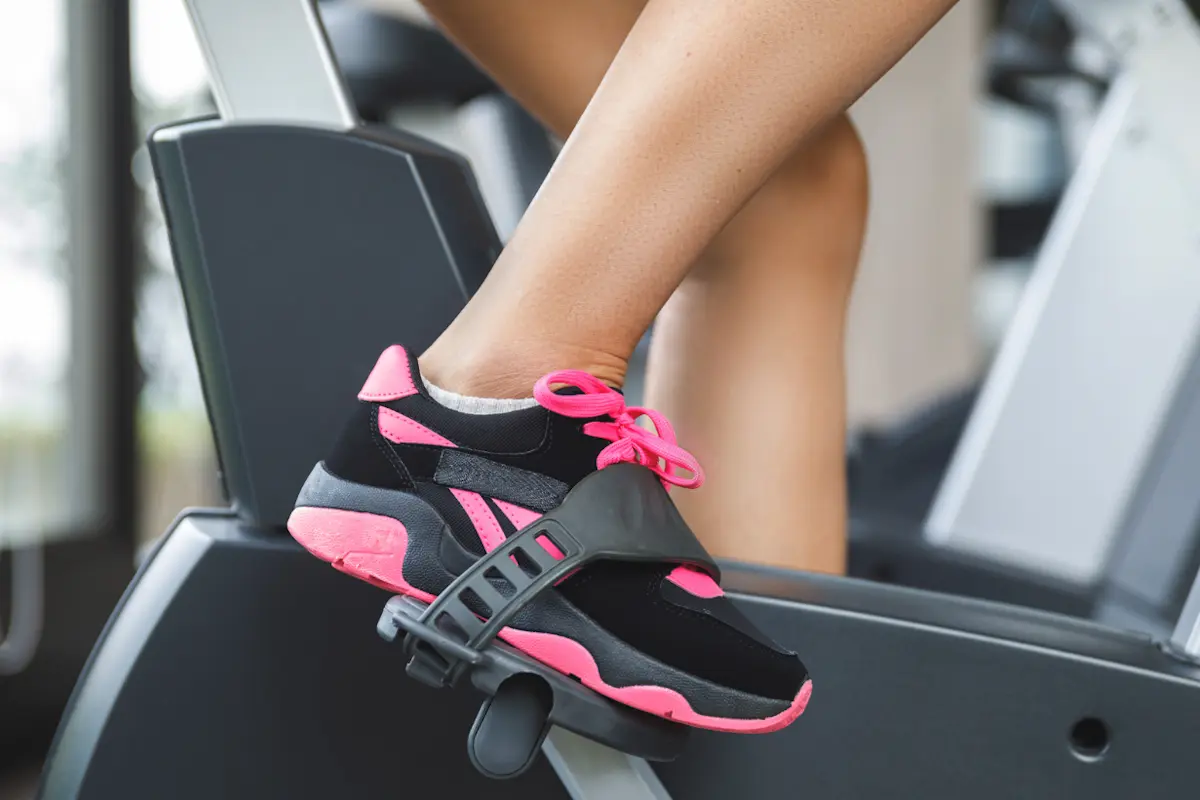
Addressing Concerns About Overtraining and the Importance of Listening to One's Body
The balance between helpful rest and harmful overtraining can be delicate.
- Overtraining is a real worry for athletes in strength sports like powerlifting and happens when exercise volume and intensity surpass the body's repair ability.
- Powerlifters and coaches should spot signs of overtraining, such as lasting muscle soreness, sleep problems, and performance decline.
Listening to your body is key to finding the right balance. Tailored non training days are good but need to fit individual needs.
- Opting for lighter workouts, like more reps with less weight, helps you stay active without straining.
- Also, activities like foam rolling and gentle stretching aid in repair while reducing overtraining risk.
Powerlifting coaches at Sportive Tricks suggest a personalized approach based on an athlete's condition, workout intensity, and responses. This ensures active recovery supports overall training by promoting muscle growth and strength without overwhelming the body.
A 2018 meta-analysis by Dupuy et al. evaluating the impact of recovery techniques on delayed onset muscle soreness (DOMS), perceived fatigue, muscle damage, and inflammatory markers after physical exercise highlighted the complexity of the interaction between training load, fatigue, and adaptation. The strategy chosen can modulate this interaction either positively or negatively.
Active Recovery: What It Is and How It Works
Active recovery, a term in exercise science, means light exercise after intense workouts. Unlike rest, this method involves gentle physical activity to boost blood flow, aiding muscle repair.
In powerlifting, it plays a key role between sessions targeting specific muscles. It includes light cardio, yoga, or dynamic stretching to keep muscles moving without intense strain. The aim is to do less intense activities than usual workouts for better repair and mobility.
It's important to note that athletes spend a much greater proportion of their time recovering than they do in training, and complete training recovery is essential for optimal performance and improvement (Bishop et al., 2008).
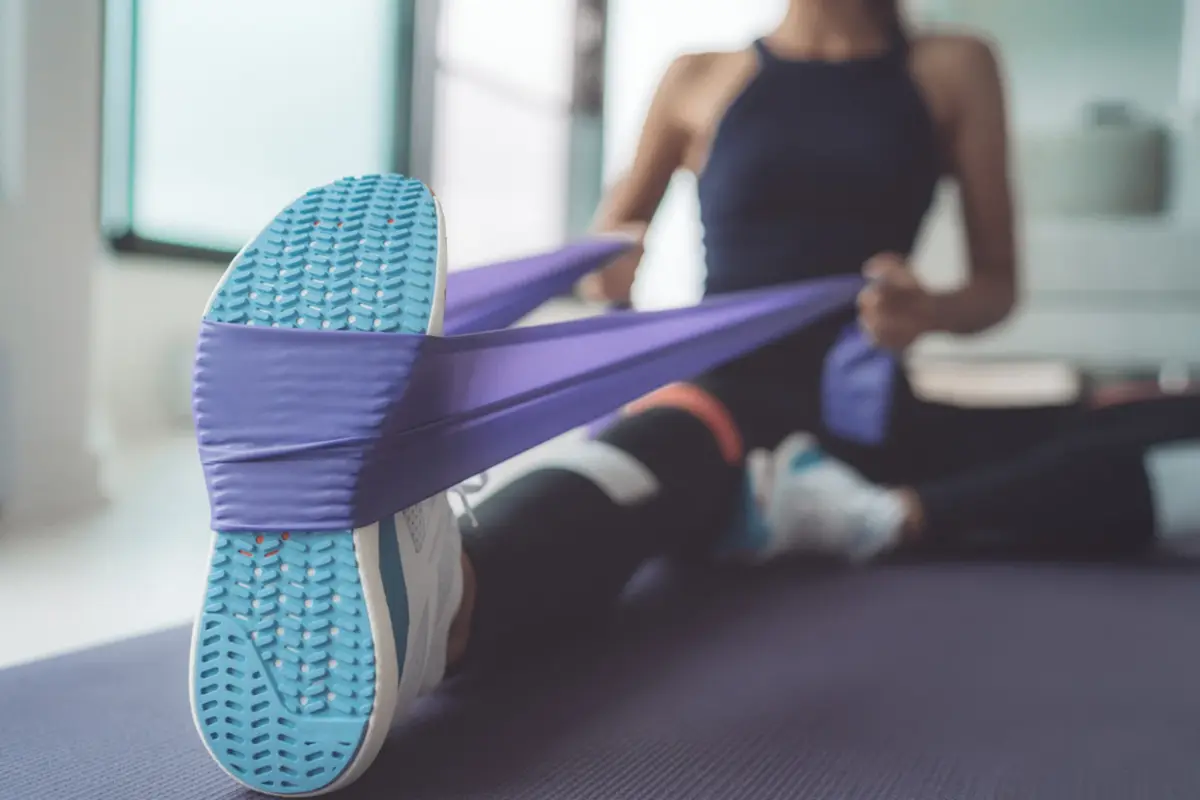
Physiological Basis of Active Recovery
- Active recovery involves gentle exercises that benefit the body by maintaining blood flow to muscles. This aids in delivering nutrients for muscle repair and clearing waste products from intense workouts, reducing soreness and enhancing muscle function.
- After a workout, the body accumulates lactic acid and other byproducts; active recovery helps metabolize them efficiently, preventing stiffness and soreness (DOMS). (Devlin et al., 2014).
- Additionally, it triggers the parasympathetic nervous system, promoting relaxation responses like slowing the heart rate and improving sleep quality, which is crucial for powerlifters' recovery and strength building.
A 2021 study by Doherty et al. emphasized that there is a need for athletes to receive individualised support and education regarding their sleep and recovery practices.
The Remarkable Benefits of Incorporating Active Recovery
Active recovery goes beyond physical recuperation, benefiting athletes holistically. It alleviates muscle soreness post-training by enhancing blood flow to affected muscles, promoting repair and growth. This is crucial after intense workouts like powerlifting, which are a stressor to the central nervous system.
These sessions offer a mental break from intense workouts, reducing stress and maintaining motivation. Activities like yoga, light cardio, or nature walks enhance the mind-body connection, promoting well-being and clarity.
Specific Benefits for Powerlifters
For powerlifters, whose training predominantly focuses on lifting heavy weights, the benefits of active recovery are manifold.
- It aids in faster recuperation from muscle soreness, enabling athletes to return to their regular training schedule more quickly. This is particularly relevant for powerlifters who engage in frequent and intense training sessions, where recovery is as crucial as the workout.
- It can lead to improved flexibility and mobility. Powerlifters, often engaged in repetitive movements that target specific muscle groups, can develop tightness in areas like the hip flexors and shoulders. Incorporating dynamic stretching and mobility work helps increase the range of motion, which is vital for performing lifts with proper form and reducing the risk of overuse injuries. (Askar 2015).
- Certain practices can improve overall conditioning and cardiovascular health. Engaging in low-intensity cardio, such as a light jog or using a stationary bike, not only aids in muscle repair but also improves cardiovascular efficiency. (Murtagh et al., 2011). This enhanced conditioning can indirectly benefit powerlifting performance by improving endurance, allowing athletes to sustain longer training sessions and recover faster between sets.
Dr David Geier, an orthopedic surgeon and sports medicine specialist, recommends active recovery as a way to prevent injuries. He explains, "Light activity between intense workouts can help maintain flexibility and reduce muscle stiffness, potentially lowering the risk of injury in subsequent training sessions".
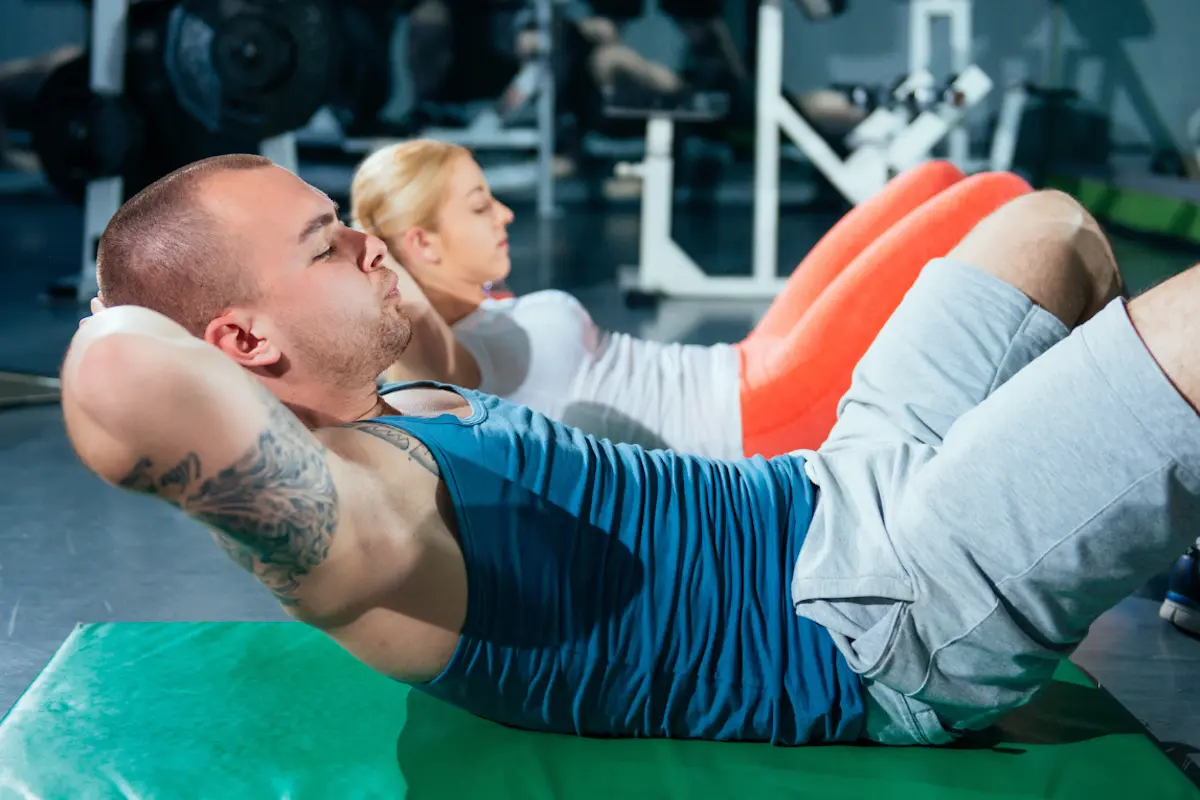
Effective Active Recovery Workout Examples
Non strength-based workouts play a crucial role in a powerlifter's training program. These sessions focus on promoting repair and maintaining fitness without the intensity of regular training. By increasing blood flow, enhancing flexibility, and reducing muscle soreness, these workouts help without stressing the body. Various types of workouts serve specific purposes in a powerlifter's overall training program.
Steady-State Cardio
- Steady-state cardio involves maintaining a consistent, moderate effort for a set period. This type of cardio, such as a light jog or a session on a stationary bike, is effective in increasing blood flow and promoting muscle repair.
- For powerlifters, steady-state cardio can help flush out metabolic by-products from muscles, thus reducing delayed onset muscle soreness (DOMS).
Dynamic Warm-Up
- Dynamic warm-ups consist of movement-based stretching that prepares the body for physical activity. Unlike static stretches, dynamic stretching involves active movements that mimic the workout to follow, effectively warming up the muscles and increasing the range of motion.
- This activity benefits powerlifters as it keeps the muscles and joints limber and ready for the demands of heavy lifting.
Mobility and Corrective Circuits
- Mobility work focuses on improving the range of motion in the joints and muscles, which is crucial for powerlifters. Incorporating mobility exercises into lighter sessions can help address imbalances and tightness developed from repetitive lifting movements.
- Corrective exercises, often part of mobility circuits, target areas that need strengthening or increased flexibility, contributing to better overall performance and reduced risk of injury.
Total Body Conditioning
- Total body conditioning in active recovery involves engaging in exercises that work the entire body but at a lower intensity than regular strength training. This can include activities like light resistance training, bodyweight exercises, or circuit training focusing on higher reps and lower weights.
- These sessions help maintain muscle conditioning without the strain of heavy lifting.
Static Stretching and Meditation for Active Recovery
- Static stretching involves holding a stretch for a period, focusing on relaxing and lengthening the muscles. Following a light cardio or conditioning session with static stretches can help further reduce muscle tightness.
- Combining these stretches with meditation or relaxation techniques can also aid in reducing psychological stress and improving mental focus, both of which are important for a powerlifter's overall well-being and performance.
Active Recovery Frequency: Finding Your Optimal Schedule
Guidelines on How Often to Incorporate Active Recovery
Determining how often to do these activities is essential for powerlifters. It should be done regularly.
- The frequency depends on the training intensity and individual needs.
- Doing active recovery 2-3 times a week benefits powerlifters in intense training.
- This schedule allows time for workouts, rest, and activities like light cardio or stretching to enhance muscle repair.
- These sessions can happen even on days with strength training. A quick session after lifting, like a light jog or foam rolling, can reduce soreness and stiffness, aiding faster repair to peak performance.
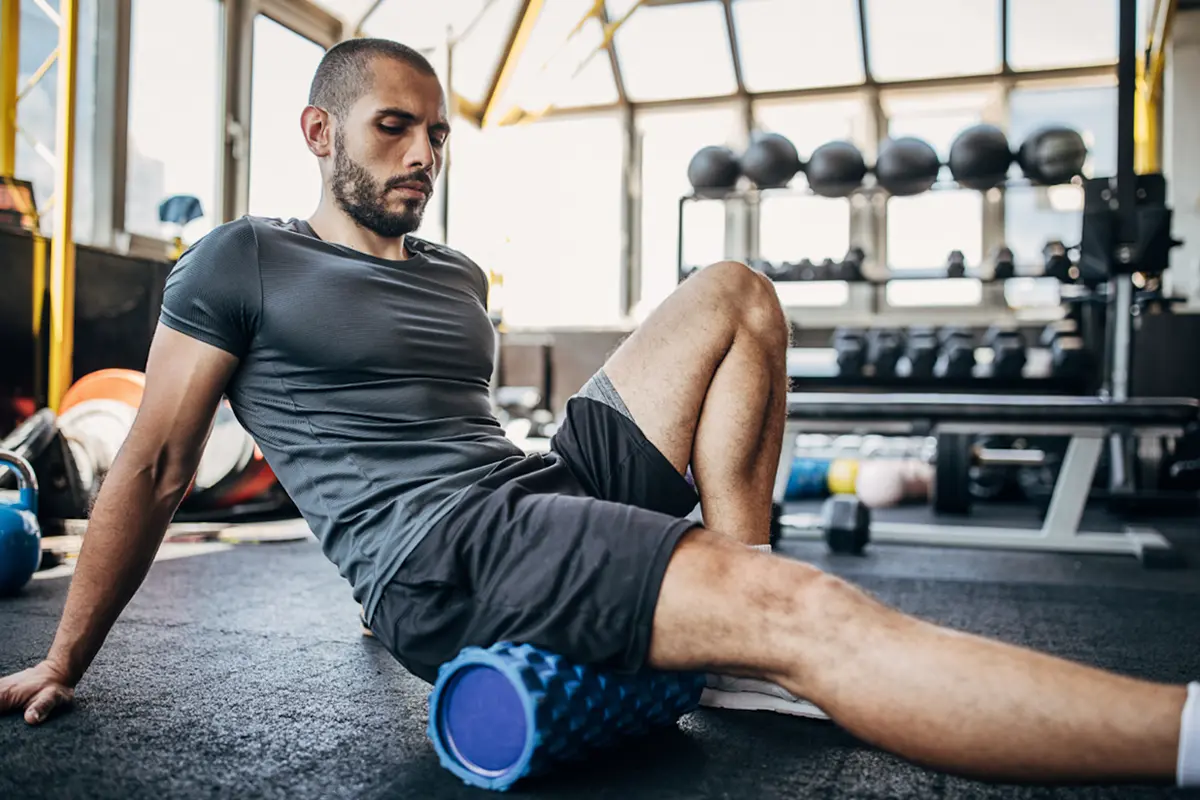
Tailoring Active Recovery Frequency to Individual Needs
The key for powerlifters is personalized approach. Each lifter's body reacts differently to training and rest. Dr Shona Halson, a senior physiologist at the Australian Institute of Sport, advocates for individualized strategies. She notes, "The optimal active recovery approach can vary greatly between athletes. It's essential to consider factors such as the athlete's sport, training phase, and individual physiological responses."
- Age, fitness level, and goals determine how often one should do these activities.
- Powerlifters should watch how their body responds to rest and training, working openly with a coach.
- Good signs include less soreness, better performance, and feeling overall well. More rest might be needed if a lifter feels very sore or tired.
- Conversely, less rest may be needed if training doesn't affect performance. Experienced athletes used to heavy training may need less rest. The aim is to balance rest and training benefits.
- Regularly evaluating and adjusting with help from a knowledgeable coach is vital. This ensures the right amount of rest tailored to each person, improving performance while avoiding overtraining or injury.
Active vs. Passive Recovery: Optimising Your Recovery Strategy
Understanding the difference between the two modalities is vital for powerlifters.
- Active recovery involves gentle exercises that boost blood flow and help muscles recover without straining the body. Examples are light cardio, stretching, and mobility work, which reduce soreness, increase flexibility and maintain fitness.
- Passive recovery, however, means total rest without any physical activity. It focuses on letting the body heal naturally without outside help. It includes good hours of sleep, relaxation, and methods like massages or foam rolling that don't require muscle engagement.
The key contrast lies in how they aid repair and restoration.
- Active recovery triggers the body's systems to promote healing actively.
- Passive recovery lets the body recover naturally with little external input.
Both play a role in a complete plan.
- Active recovery benefits after intense workouts by flushing out toxins and easing muscle tension.
- Passive rest is crucial after tough sessions or signs of overtraining to allow the body to rebuild itself.
How Understanding Both Can Optimise Overall Recovery and Training Efficiency
A good mix of methods can help powerlifters recover well and train better. Knowing when to use each technique can avoid overtraining, lower injury chances, and boost performance.
- For example, after a challenging workout, taking a day off or getting more sleep might benefit a powerlifter more.
- On the other hand, after a less intense session, doing light activities like jogging or yoga can help keep muscles flexible and blood circulating.
It's also essential to recognize the mental advantages of different methods.
- Relaxing helps give the mind a break for long-term motivation and mental well-being.
- In contrast, active methods can make one feel accomplished and maintain a routine, which is good for mental health.
A coach can be invaluable in deciding the right mix based on the athlete's schedule, goals, and response to different methods. By customizing plans for each athlete, powerlifters can recover well, enabling them to train harder and better in the future.
Mental Health Benefits of Active Recovery for Powerlifting

A study by Kellmann et al. (2018) found that proper recovery strategies can improve mood states and reduce perceived stress in athletes. The researchers emphasized that restoration is not just physical but also has significant psychological components, including relaxation techniques and social activities.
The advantages go beyond the body, impacting the mind and emotions of powerlifters.
- Light exercises like yoga or a walk in nature can help athletes relax and reduce cortisol and stress.
- These activities can divert attention from competition pressures, creating balance and mental clarity.
- For powerlifters, this means better focus during training and competitions.
- Moreover, gentle physical activities can trigger endorphins, our natural mood boosters.
- This can induce calmness and happiness, counteracting stress in high-pressure sports settings.
- Regular routines can significantly contribute to positive mental health and well-being in a training program.
How Active Recovery Can Improve Mindset and Reduce Stress
Active recovery is crucial for powerlifters' mental well-being. Powerlifting can be stressful, focusing on personal bests and improvement. It involves beneficial physical activities that relax the mind.
Dr Carl Foster, professor of exercise and sport science at the University of Wisconsin-La Crosse, highlights the psychological benefits. He states, "Active recovery can provide a mental break from intense training while still maintaining a level of physical engagement, which many athletes find beneficial for their overall well-being."
- Practices like stretching, light jogging, or foam rolling help in repair. These routines aid in physical healing and provide a break from the intensity of the training, promoting control and self-care and improving the athlete's mental state.
- These activities improve sleep quality, which is essential for mental health. Better sleep enhances mood, thinking abilities, and stress management. For powerlifters, this means better handling of exercise stresses and faster return to training.
Integrating these methods into a powerlifter's routine enhances performance and mindset. It fosters a balanced training approach prioritizing mental and physical health for lasting success in sports.
Concluding Thoughts on Active Recovery for Powerlifters
It's clear that this is vital for powerlifting. It involves light exercises and offers various benefits crucial for powerlifters.
- It helps physically, emotionally, and mentally. Light cardio, stretching, and yoga maintain muscles, reduce stress, and boost clarity.
- Personalization is Important: Tailor the frequency and type to your needs. It can vary from a few times weekly to after intense workouts.
- Balance is Key: Knowing when to do active or complete rest is crucial for optimal repair and injury prevention.
- Mental Health Boost: These methods reduce stress and aid mental freshness, essential for powerlifting performance.
- For all powerlifters and coaches, active recovery is crucial for strength and success. It enhances physical ability and mental toughness.
Frequently Asked Questions
Will active recovery slow down my strength gains?
No, it enhances strength gains by improving repair and reducing muscle soreness, allowing you to train more effectively.
Can I do active recovery on the same day as my powerlifting workout?
Light activities like walking or gentle stretching after training can help reduce soreness and promote repair.
What's the ideal heart rate for active recovery activities?
Keep it between 40-60% of your maximum heart rate to maintain low-intensity activity.
Should I do active recovery when I'm already feeling sore?
Gentle movement can help reduce soreness by increasing blood flow and clearing metabolic waste.
How long should an active recovery session last?
Typically, 20-30 minutes is sufficient, but this can vary based on the activity and your needs.
References
- Askar, P. V. (2015). Effectiveness of eccentric training, dynamic range of motion exercises and static stretching on flexibility of hamstring muscle among football players. International Journal of Physiotherapy, 2(6).
- Bishop, P. A., Jones, E., & Woods, A. K. (2008). Recovery from training: A brief review. Journal of Strength and Conditioning Research, 22(3), 1015-1024.
- Devlin, J., Paton, B., Poole, L., Sun, W., Ferguson, C., Wilson, J., & Kemi, O. J. (2014). Blood lactate clearance after maximal exercise depends on active recovery intensity. Journal of Sports Medicine and Physical Fitness, 54(3), 271-278.
- Doherty, R., Madigan, S. M., Nevill, A., Warrington, G., & Ellis, J. G. (2021). The sleep and recovery practices of athletes. Nutrients, 13(4), 1330.
- Dupuy, O., Douzi, W., Theurot, D., Bosquet, L., & Dugué, B. (2018). An evidence-based approach for choosing post-exercise recovery techniques to reduce markers of muscle damage, soreness, fatigue, and inflammation: A systematic review with meta-analysis. Frontiers in Physiology, 9, 403.
- Howatson, G., Brandon, R., & Hunter, A. M. (2016). The response to and recovery from maximum-strength and -power training in elite track and field athletes. International Journal of Sports Physiology and Performance, 11(3), 356-362.
- Kellmann, M., Bertollo, M., Bosquet, L., Brink, M., Coutts, A. J., Duffield, R., Erlacher, D., Halson, S. L., Hecksteden, A., Heidari, J., Kallus, K. W., Meeusen, R., Mujika, I., Robazza, C., Skorski, S., Venter, R., & Beckmann, J. (2018). Recovery and performance in sport: Consensus statement. International Journal of Sports Physiology and Performance, 13(2), 240-245.
- Murtagh, E. M., Murphy, M. H., & Boone-Heinonen, J. (2010). Walking – the first steps in cardiovascular disease prevention. Current Opinion in Cardiology, 25(5), 490-496.
- Ortiz, R. O., Jr., Elder, A. J. S., Elder, C. L., & Dawes, J. J. (2019). A systematic review on the effectiveness of active recovery interventions on athletic performance of professional-, collegiate-, and competitive-level adult athletes. Journal of Strength and Conditioning Research, 33(8), 2275-2287.